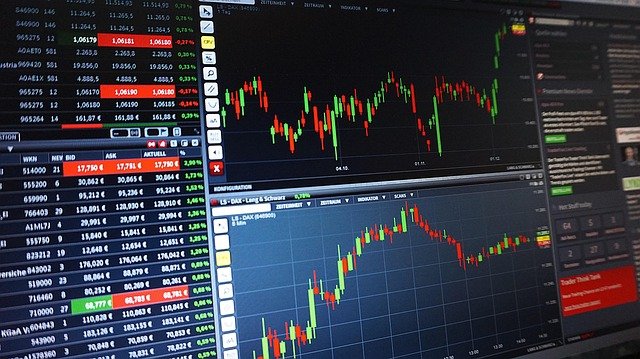The Significance of Market Making in the Crypto Revolution
Cryptocurrencies have sparked a revolution in finance, introducing a new paradigm for decentralized and borderless transactions. Market making, a fundamental mechanism that drives liquidity and market efficiency within crypto markets, is at the heart of this revolution. By providing continuous liquidity and fostering price discovery, market making plays a pivotal role in shaping the trajectory of the crypto revolution and facilitating the widespread adoption of digital assets.
Overview of the Crypto Revolution
The crypto revolution represents a seismic shift in financial transactions, challenging traditional notions of money and banking. Powered by blockchain technology, cryptocurrencies offer decentralized and censorship-resistant alternatives to traditional fiat currencies. This revolution has democratized access to financial services, enabling individuals to transact directly with one another without the need for intermediaries such as banks or payment processors. As the crypto revolution unfolds, market making emerges as a critical ecosystem component, ensuring liquidity and stability in an otherwise nascent and volatile market.
Role of Market Making in Driving Market Evolution
Market making is the backbone of crypto markets, providing the liquidity necessary for efficient price discovery and trading. Market makers act as intermediaries, continuously quoting buy and sell prices for digital assets and facilitating transactions between buyers and sellers. Without market makers, crypto markets would lack the liquidity to support large trades and be susceptible to extreme price swings and manipulation. Thus, market making plays a central role in driving the evolution and maturation of crypto markets, laying the groundwork for broader adoption and integration into the global financial system.
Understanding Market Making Definition and Functions of Market Making
Crypto market making in the context of crypto markets involves continuous liquidity provision by quoting buy and sell prices for digital assets. Market makers act as intermediaries, bridging the gap between buyers and sellers and facilitating smooth trading operations. By continuously offering competitive bid and ask prices, market makers enhance liquidity and reduce the bid-ask spread, thereby improving market efficiency and enabling smoother price discovery.
Importance of Liquidity Provision in Crypto Markets
Liquidity is essential for the proper functioning of asset markets, allowing investors to buy or sell assets quickly and at fair prices. Market makers ensure continuous liquidity by quoting bid and ask prices, absorbing order flow, and adjusting prices in response to market conditions. Their presence reduces market frictions, such as bid-ask spreads and price slippage, making it easier for investors to execute trades and participate in the market. As such, liquidity provision is critical for attracting investors, fostering market stability, and driving the growth of crypto markets.
Mechanisms and Strategies Employed by Market Makers
Market makers employ various mechanisms and strategies to provide liquidity within crypto markets. They continuously update bid and ask prices based on market conditions, order book dynamics, and trading volumes. Market makers may also utilize algorithmic trading strategies, high-frequency trading techniques, and automated market maker (AMM) mechanisms to optimize liquidity provision and improve order execution efficiency. Additionally, market makers monitor market sentiment, news events, and other external factors to adjust their pricing strategies and manage risk effectively.
The Impact of Market Making in the Crypto RevolutionFacilitating Accessibility and Adoption of Cryptocurrencies
Market making plays a crucial role in facilitating the accessibility and adoption of cryptocurrencies by providing liquidity and reducing barriers to entry for investors. By ensuring continuous liquidity and tight bid-ask spreads, market makers make it easier for individuals and institutions to buy and sell digital assets, increasing market participation and fostering broader adoption. This accessibility is crucial in driving the mass adoption of cryptocurrencies and expanding their utility beyond niche communities to mainstream users and businesses.
Enhancing Market Efficiency and Price Discovery
Market making enhances market efficiency and price discovery within crypto markets by providing liquidity and reducing price volatility. Market makers absorb order flow, adjust prices dynamically, and mitigate market imbalances, ensuring that assets are traded fairly and transparently. This fosters market integrity, reduces the risk of price manipulation, and increases investor confidence in the reliability and stability of crypto markets. As a result, market making contributes to developing robust and efficient markets that attract investors and support sustainable growth.
Fostering Innovation and Market Development
Market making fosters innovation and market development within the crypto revolution by providing a liquid and efficient trading environment. The presence of active market makers encourages the listing of new assets, the development of innovative trading products, and the evolution of market infrastructure. Market makers facilitate trading a wide range of assets, including cryptocurrencies, tokenized assets, and derivatives, thereby expanding investment opportunities and diversifying market offerings. This fosters competition, innovation, and growth within the crypto ecosystem, driving forward the revolution and unlocking new possibilities for financial innovation and inclusion.
Quantifying the Impact: Metrics and Indicators Trading Volume and Turnover Rates
Trading volume and turnover rates are critical metrics used to quantify the impact of market making on the crypto revolution. High trading volume and turnover rates indicate robust liquidity and market activity, reflecting the effectiveness of market making in attracting trading volume and facilitating order execution within asset markets. These metrics provide insights into the level of investor interest, market participation, and overall market dynamics, which are essential for assessing crypto assets’ health and growth potential.
Bid-Ask Spreads and Depth of Order Book
Bid-ask spreads and the depth of the order book are essential indicators of liquidity and market depth within crypto markets. Narrow bid-ask spreads indicate tight market conditions and high liquidity, making it easier for traders to execute orders at competitive prices. The depth of the order book measures the volume of buy and sell orders at different price levels, providing insights into the depth of liquidity and the potential for price movement within the market. These metrics help assess the efficiency and resilience of market making activities and their impact on asset growth.
Market Capitalization and Asset Valuation
Market capitalization and asset valuation are fundamental metrics used to measure the growth and success of crypto assets. Market capitalization represents the total value of a cryptocurrency, calculated by multiplying its price by the total supply of coins in circulation. Asset valuation, on the other hand, assesses the intrinsic value of a cryptocurrency based on its utility, adoption, and potential for future growth. Market makers contribute to the growth of crypto assets by providing liquidity, reducing price volatility, and attracting investors, ultimately driving market capitalization and increasing asset valuation. These metrics reflect crypto assets’ overall health and growth trajectory and are closely monitored by investors, analysts, and market participants.
Regulatory Considerations and Compliance Challenges
Navigating regulatory considerations and compliance challenges is essential for market makers operating within the crypto revolution. The regulatory landscape for cryptocurrencies is complex and evolving, with varying levels of regulatory scrutiny and oversight across jurisdictions. Market makers must adhere to regulatory standards related to licensing, anti-money laundering (AML) regulations, know-your-customer (KYC) procedures, and market manipulation prevention. Compliance with regulatory requirements poses operational challenges and may require significant resources and expertise to navigate effectively. Market makers must stay informed about regulatory developments and work closely with legal and compliance teams to ensure compliance with applicable laws and regulations.
Future Trends and Implications Technological Innovations in Market Making
Technological innovations are expected to drive the future of market making in the crypto revolution. Top market makers, like Yellow Capital, Wintermute, and Emperica, will continue to leverage advanced technologies such as artificial intelligence (AI), machine learning (ML), and blockchain to enhance trading strategies, optimize liquidity provision, and improve risk management practices. AI and ML technologies enable market makers to analyze vast amounts of data, identify trading opportunities, and execute trades quickly and precisely. Blockchain technology also offers new opportunities for market makers to innovate and expand their market-making activities in decentralized trading environments, further driving asset growth and market development.
Integration with Decentralized Finance (DeFi) Protocols
The integration of market making with decentralized finance (DeFi) protocols presents new opportunities and challenges for market makers. Market makers are exploring opportunities to provide liquidity to decentralized exchanges (DEXs), liquidity pools, and lending protocols, leveraging automated market maker (AMM) mechanisms and liquidity aggregation strategies. By integrating with DeFi protocols, market makers can access new liquidity sources, participate in innovative trading strategies, and contribute to the growth of decentralized financial ecosystems. However, the integration of market making with DeFi also presents challenges related to regulatory compliance, technological interoperability, and market infrastructure development, which must be addressed to realize the full potential of decentralized finance.
Potential Impact of Regulatory Developments on Market Making
Regulatory developments are likely to significantly impact the future growth of crypto assets and the role of market makers. Increased regulatory scrutiny and enforcement actions may impose stricter compliance requirements on market makers, leading to higher operational costs and increased barriers to entry. Clear and favorable regulatory frameworks, on the other hand, can provide market makers with greater certainty and confidence, fostering market integrity and attracting institutional capital. Market participants must closely monitor regulatory developments and engage with regulators to shape policies that support innovation, market transparency, and investor protection, ultimately driving sustainable asset growth and market development.
Conclusion
In conclusion, the significance of market making in the crypto revolution cannot be overstated. Crypto market makers play a critical role in providing liquidity to crypto exchanges, fostering market efficiency, and driving the growth and adoption of digital assets. By ensuring continuous liquidity provision, reducing bid-ask spreads, and enhancing market stability, market makers create a vibrant trading environment that attracts investors and facilitates the expansion of crypto markets.
Looking ahead, market makers will continue to leverage technological innovations, integrate with DeFi protocols, and navigate regulatory challenges to drive further growth and innovation within the crypto revolution. Technological advancements such as AI, ML, and blockchain will enable market makers to enhance trading strategies and optimize liquidity provision. At the same time, integration with DeFi protocols will unlock new liquidity sources and trading opportunities. Regulatory developments will shape the regulatory landscape for market makers, influencing compliance requirements and market structure.
Market makers are integral to the success and sustainability of the crypto revolution. By embracing innovation, fostering market integrity, and navigating regulatory challenges, market makers can continue to drive liquidity, attract investors, and contribute to the long-term success of digital assets and decentralized finance.




